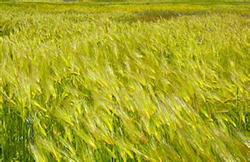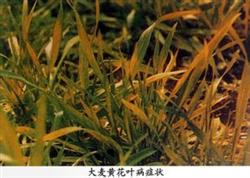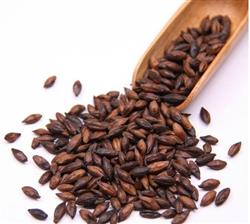Introduction of barley in different places

Special attention must be paid to the following four issues of principle: ⑴ should make clear the introduction goal: to find out what kind of barley varieties are needed locally and what is the urgent purpose of introduction. If it is for food and feed, the varieties with high protein content and high yield should be introduced; if it is used for beer production, the varieties with moderate protein content and high starch content should be introduced. ⑵ should pay attention to variety characteristics: understanding the winter and spring characteristics of barley varieties is an important basis for cross-regional introduction. For the variety types in the middle and lower reaches of the Yangtze River, the overwintering temperature in some areas is not too low, and they are required to be precocious by the tillage system. therefore, the ecotypes of some varieties are precocious in spring. In some areas, the temperature is low, the ripening period is not strict, and the ecotypes of some varieties are winter or semi-winter mid-maturity or mid-late maturity. ⑶ should pay attention to the origin of varieties: the exchange of improved varieties should be carried out in different regions and different soil qualities; there should be certain differences between regions and conditions that can improve the characteristics of varieties. The introduction of early-maturing and medium-maturing varieties from the north in the southern region can adapt to the conditions of high temperature and short sunshine in the south; it is difficult to successfully introduce varieties with low altitude in high altitude areas; it is easy to succeed in similar ecological areas. The introduction experiment of ⑷ should be carried out: after introducing new varieties, do not popularize and plant in large areas at once, but first do trial observation in small areas, compare varieties and cultivation experiments, test their local performance and adaptability, explore suitable cultivation and management measures, and evaluate their utilization value and the prospect of popularization. The introduction and domestication experiment of barley generally goes through four steps. Observation experiment in the first year: planting in the plot, screening varieties with good comprehensive characters and adaptability, and mixed selection of excellent individual plants for plot yield test next year. The second year yield test: compare the yield with the control varieties, and continue to study the adaptability of the varieties. The fine breed moves on to the next procedure. Multi-site experiment and cultivation experiment in the third year: continue to study the adaptability and yield of varieties, understand the cultivation characteristics of varieties, experiment, demonstration and reproduction. Okay, accelerate reproduction next year. Propagation and promotion in the fourth year: systematic seed selection experiment was carried out at the same time.
- Prev

Occurrence and control of barley yellow mosaic disease
Barley yellow mosaic disease mainly occurred in Hubei, Zhejiang, Jiangsu, Shanghai and Anhui provinces and cities in the lower reaches of the Yangtze River, especially in Jiangsu, Zhejiang and Shanghai. The diseased plant died ahead of time, resulting in the decrease of ear setting rate, seed setting rate, 1000-grain weight, flour yield and quality of barley. Barley happens.
- Next

The production of mugi-cha
First, raw material formula. 7kg of barley flour, 3kg of tea powder, 100g of natural spices, 50g of beef bone powder. The second production method ⑴ cleaning to remove stones: it is best to wash the barley first, remove sundries, gravel sand and so on, and then dry or dry. ⑵ roasting: roasting machine is used in the factory, available in the family.
Related
- The first cup of black tea in spring, the flavor and history of tea gardens in Kenya, Africa
- The computer can not only choose potatoes, but also grow tea rice. AI will grow winter oolong tea champion.
- It is not only the inflated tea bitten by insects, but also engraved with the four seasons tea in Beipu.
- The Oriental Beauty Tea Festival in Zhuxian County takes the stage at the weekend to experience the plus-size feast of oil tea.
- & quot; Oriental Beauty Tea & Exploration of Emei in Hsinchu, the hometown of quot;
- The new variety of strawberry "Tainong 1" dessert is the first choice with mellow aroma. Crimson gorgeous
- History of Tea in Taiwan: from Wild Inner Mountain to Export Tea Garden
- Two types of Taiwan Oriental Beauty Black Tea won the British three-Star Award for Childhood Tea Xiang Zhang Jiaqi changed from pilot to champion tea maker.
- Banana species and varieties: the planting history of Taiwan Xianren banana and dwarf banana is long, is banana disease resistant?
- Coffee planting Technology: Qianjie Coffee from Seedling to harvesting

